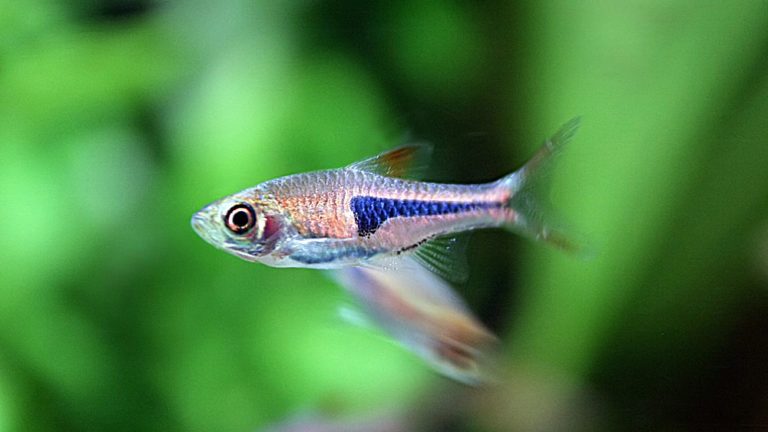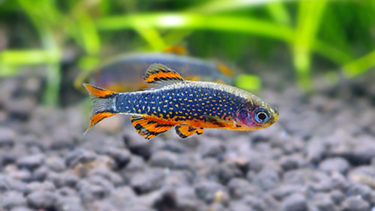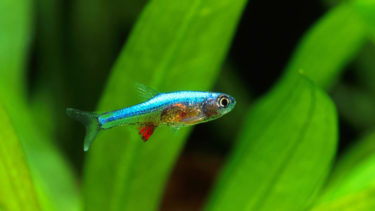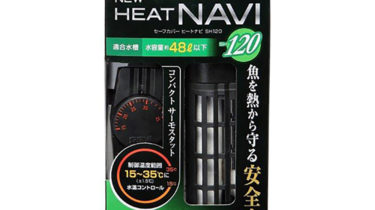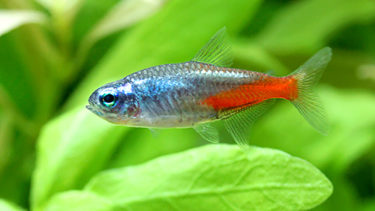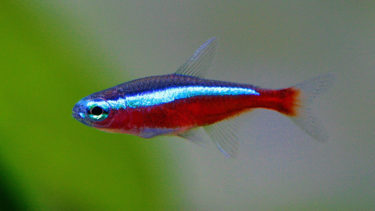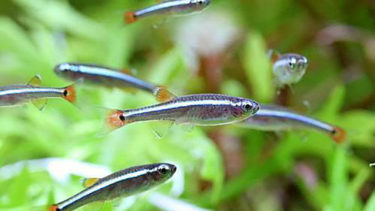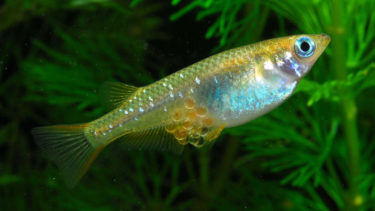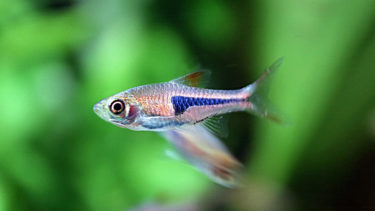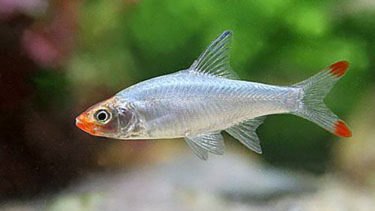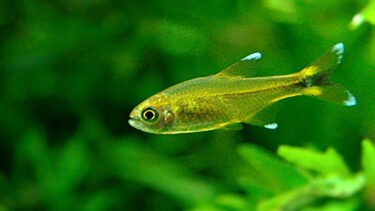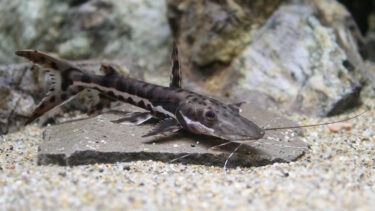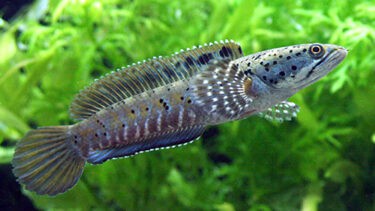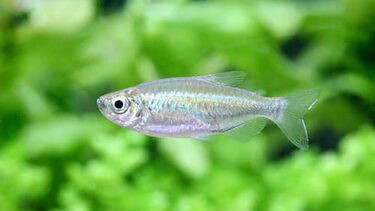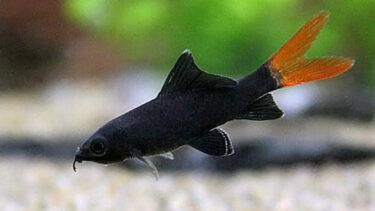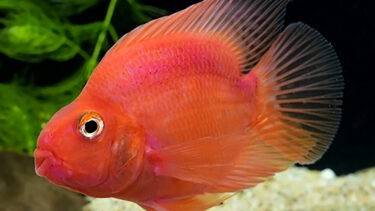Rasbora espaye is a beautiful tropical fish of the Trigonostigma genus of the carp family, Carpidae, native to Thailand, Malaysia, and Indonesia in Southeast Asia, and characterized by its orange coloration with black patterns on the sides of its body. In this article, I would like to explain in detail the characteristics of the Rasbora espaye and how to keep it.
What is Rasbora Espay?

Rasbora espaye is a tropical fish in the Trigonostigma genus of the carp family, Carpidae. Rasbora espaye originates from Thailand, Malaysia, and Indonesia in Southeast Asia.Rasbora espayi's body color is characterized by a black pattern on the sides of its body with an orange base color. Rasbora espey is not in the genus Rasbora, although it has Rasbora in its name. Therefore, the scientific name is "Trigonostigma espeyi. However, this site uses Rasbora espay because it is generally recognized as Rasbora espay, not Trigonostigma espay. Therefore, some specialty stores may use the name Trigonostigma espey instead of Rasbora espey.
The Microlasbora hanabi is a very beautiful tropical fish that is native to the Salween River in Myanmar, Southeast Asia, and belongs to the Celestictis genus of the carp family, Carpidae, with a dark blue base color and bright yellow speckled pattern. In this article, we will introduce you to the Microlas [...].
The Rasbora acerodyi Blue is a tropical fish of the carp family Sunda Danio of the order Carpidae, native to Sumatra and Borneo islands in Indonesia, Southeast Asia, and has a beautiful neon blue body color on its back part. In this article, we will discuss the characteristics of the Microrasbora hanabi [...].
How to keep Rasbora Espey
Rasbora espaye will be an easy breed to keep. The lifespan of a Rasbora espaye will be about 2 to 3 years. The body size is about 3 cm. However, both lifespan and body size vary depending on the environment in which they are kept and the food they are fed. It prefers slightly acidic to neutral water (especially soft to moderately hard water), with a pH of 5.5 to 7.5. Rasbora espaye is classified as a tropical fish, so if kept in Japan, it will require a heater in winter.In addition, Rasbora espaye has the habit of swimming in groups, so if you are not sure about the size of your aquarium, we recommend that you put it in a relatively large tank with a large number of fish, which will give it a beauty not found in other varieties.
A heater is a device that maintains a constant water temperature. If you go to a specialty store that carries heaters, you will find a wide variety of types. Some people may be at a loss as to which one to choose. In this article, we would like to explain about such heaters [...]
Points to keep in mind when mixing swimmers
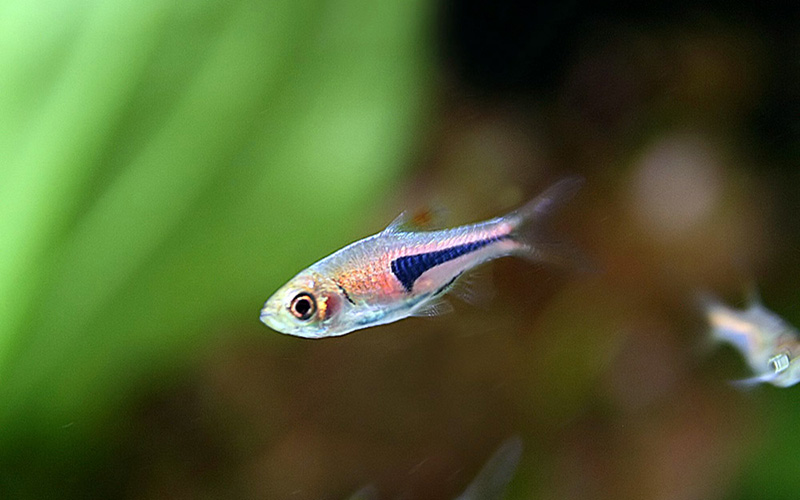
Regarding mixed swimming, first of all, Rasbora espaye has a mild temperament. Therefore, if the breed with which they are mixed is territorial or aggressive, the micro Rasbora hanabi may be attacked, resulting in injury or even illness due to stress.Recommended species for mixing with Rasbora espayi are smaller fish such as neon tetras and other caracinids and red fins. Rasbora espaye swim in the middle to upper layers of the aquarium. Therefore, when mixing them with angelfish that swim in the same layer, they may fight with each other, so please add water plants or other measures to prevent this. When mixing angelfish with other species, make sure that the Rasbora espaye is eating well, as it is common for other species to take their food.
The neon tetra is a tropical fish in the family Carassinae, and is a beautiful fish with a blue glow from its head to its tail fin. In this article, I would like to explain in detail the characteristics of the Neon Tetra and how to keep it. What is a Neon Tetra?
The cardinal tetra is a tropical fish of the family Carassinae of the order Carassinae that lives in the Negro and Amazon rivers in South America. It is a beautiful fish with a blue glow from its head to its tail fin. In this article, I would like to explain in detail the characteristics of the Cardinal Tetra and how to keep it. [...].
The redfin is a tropical fish of the carp family Tanichthys, which is native to Baiyunshan in Guangzhou, China. Its body color is mainly silver-gray with a dark blue line from the back of the eye to the base of the tail fin. In this article, we will explain in detail the characteristics of the redfin and how to keep it [...].
Points about spawning
Many people who keep Rasbora espayi want to breed them. However, breeding Rasbora espayi is said to be highly challenging in a typical breeding environment.Among them, those who are successful in breeding often use the following methods to breed. First, in order to breed, one female and three males are mixed to make a pair. Once the pair is confirmed, the pH is lowered by 0.5 to 1 less than normal to turn on the spawning switch. After that, we lower the pH to 6.0 to 6.5, which is more acidic, so that the females begin to prepare for spawning. Since spawning often occurs on the surface of leaves, it is a good idea to add plants with large leaves such as Amazon Sword or Microthorium. After hatching, take the same measures as for normal tropical fish. If you are interested in having them spawn and breed, please refer to the following information.
Many people who keep killifish want them to spawn. However, not many people know about spawning and what they need to do to prepare for it. This time, we would like to explain the method of spawning and the points to be noted [...].
If you have kept goldfish for a long time, you may want to try to breed them. However, if goldfish spawning is not done with care, there is a high possibility that the goldfish will weaken. In this article, I would like to explain in detail the method and precautions for spawning. The time of spawningThe time of spawning of goldfish is [...]
What to keep in mind when keeping Rasbora espaye
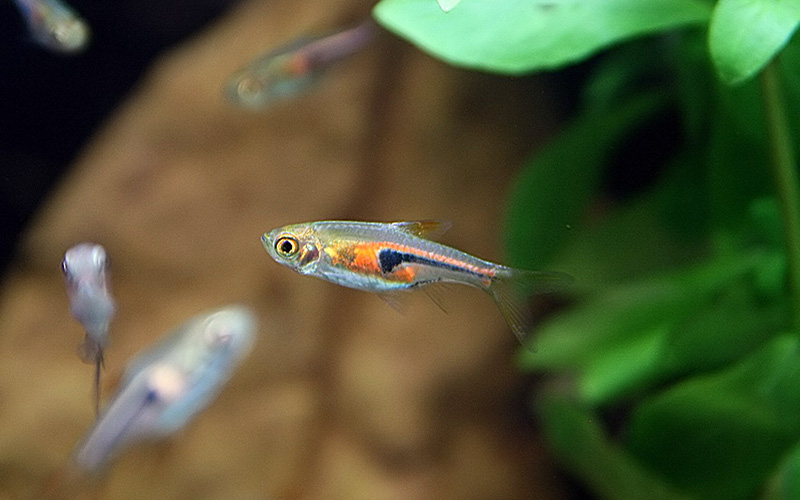
Rasbora espaye is recommended because it is easy to keep and to mix with other species. Another attraction is that it is likely to be sold at specialty stores due to its high name recognition. Rasbora espaye has conspicuous orange and black colors, but a single fish is not very conspicuous, so it is recommended to keep a few fish in an aquarium. Also, like neon tetras, Rasbora espaye swim in clumps, so it is recommended to have a large number of them to make them more showy.Rasbora espay itself has long been a popular variety, so you may have seen it before, but if you have a chance to see it in a specialty store, I highly recommend you take a look.

